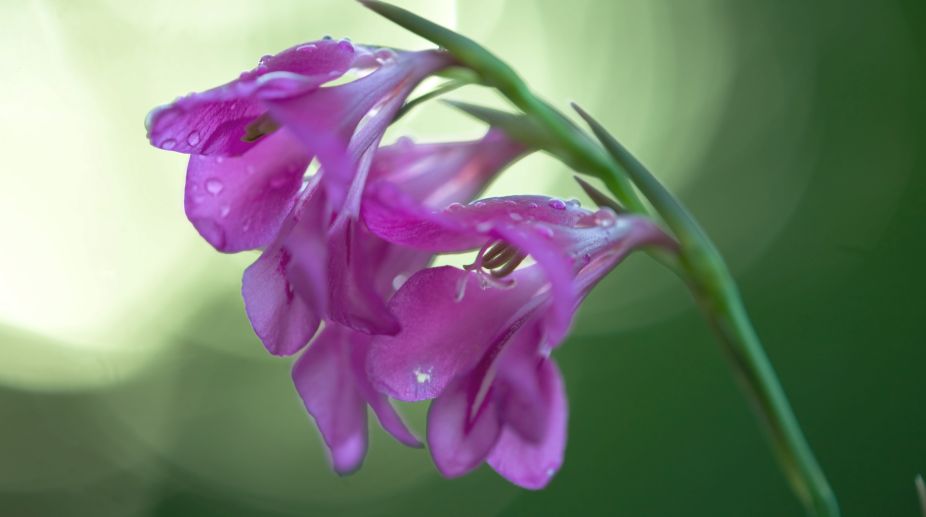‘Synthesis of Difference’ depicts the confluence of cultures
The Korean Cultural Centre India (KCCI) organizes a meaningful exhibition by Korean and Indian contemporary artists, promoting cultural exchange between the two countries.

Representational image (Photo: Getty Images)
Blending nature and fragrance, an elaborate floral arrangement provided an oasis in the scorching heat of the capital.
Organised by the Korean Cultural Centre India (KCCI), the refreshing flower exhibition, Floral Art and Lifestyle-II, was themed around a traditional Korean wedding.
Advertisement
"Wedding is the second chapter of life,"explained Mi Ryung Maeng, president of the Dahewa flower society, Korea.
Advertisement
Spread over two floors the flower arrangement was presented by 15 Korean artists.
The art work was minimalistic and evoked peace. The flowers were brought from Korea and were used as symbol of love used during Korean wedding.
Each arrangement spoke of harmony, vow, delight, peace, courage, affection, respect, and nature's beauty.
Visitors were welcomed at the entrance by an arrangement named Love Forest.
Comprising Gladioli, purple Carnations and red Roses as well as frames of hearts made up of dried flowers, this section represented the falling in love.
One then moves on to a delightful corner depicting a garden, where the love blooms. This then leads to an altar, with an aisle lit by candles on the floor and flower-bedecked wedding cards on the walls.
The altar was an elaborate flower decoration with an image of the bride and groom in the centre.
With the help of Korean tissue paper, containers holding flowers and bride jewellery boxes were made.
From here one is led to the party room, where various arrangements represented celebrations.
In a corner was a grouping of charcoal and cactus, which ward off evil eye and purify the air.
The guests were represented by shoes and hand bags filled with orchids.
Further down was a tableau of musical instruments and a colourful silk attire of a musician all decked
up with flowers.
There was another altar of wedding ceremony with fans, a painting of patchwork quilt and a garland of chopsticks, representing the tradition and spirituality to be followed after marriage for the long life and happiness.
One then walks through an adjoining room following a path of dried flowers leading to the nuptial bed.
Symbols of household, including tea ceremony and household utensils dot the room.
Traditional art "Love for flowers in India is special and long, as even King Ashoka included flowers when
he encouraged the cultivation of herbs and trees," said KCCI director, Kim Kum Pyoung, who opened the exhibition.
Speaking about the ancient tradition of flower arrangement in Korea, the Korean Ambassador's wife, Lee Jee yoon said, "The exhibition is full of creativity and efforts of participating artists. Korean flower arrangement has different charms from Japanese or others, which can be seen in the harmony of each piece arranged for presenting happiness of marriage. I hope flower lovers in India and Korea build a friendship through this exhibition."
Asked about any linkages with Ikebana,the Japanese art of flower arrangement, which has its roots in Indian tradition of floral offering, Lee Jee yoon explained that the art indeed has its origin in India. However, it moved with Buddhism from India to China, Korea and then Japan.
Thus the Korean art was not influenced by Japan.
Another difference is that Ikebana is governed by strict rules but the Korean art form is more free and seeks harmony with nature.
There are at least a dozen schools of traditional flower arrangement in Korea.
Formal floral arrangements are said to be closely allied to the traditional tea ceremony. They were pri-
marily done by women in tea houses though there is documentary evidence of arrangements in Buddhist temples being the precursors.
Advertisement